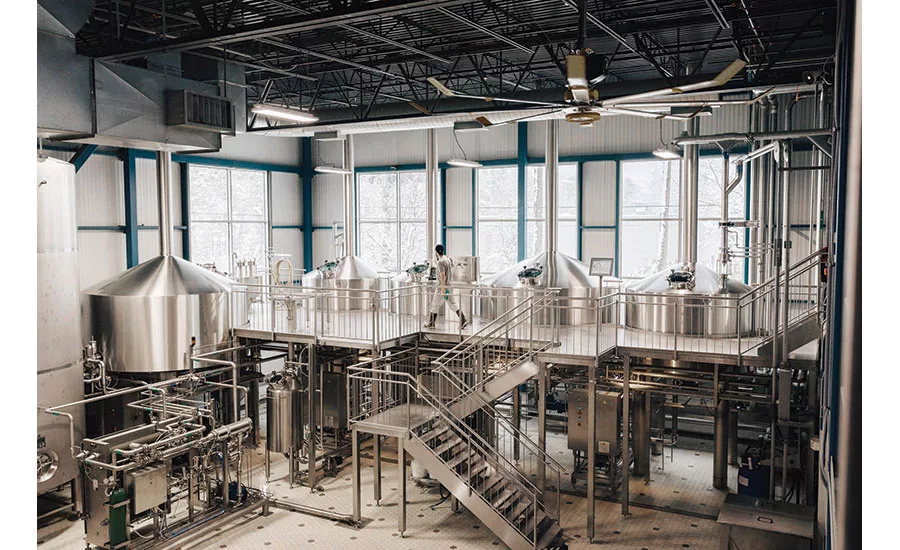Seepex pumps increase Allagash’s brewing capacity
Brewer upgrades progressive cavity pumps to handle spent grain

In 1995, Rob Tod brewed his first Allagash beer in the corner of a warehouse. Twenty-five years later, his brewing operation looks a little different. More than 140 employees spend their working days at Allagash Brewing Co., which has now expanded to two brew houses that cover 75,000 sq. ft. and produce 101,000 barrels of beer per year.
Allagash has scaled up through the years with extensive planning and consideration as its business and operation evolved. In the early 2010s, the demand for Allagash products greatly exceeded its brew house—capable of producing 35-barrel batches. Sean Diffley, engineering director, was brought on in 2012 to devise a plan to expand and enhance Allagash’s brewing capabilities.
In 2013, the brewer was able to triple its capacity by adding a new brew house capable of producing 70-barrel batches. BrauKon was chosen for the new custom brewing system, which includes a SEEPEX BTQ 35-12 progressive cavity pump to handle spent grain.
Diffley and other staff members noticed that the pump handling the spent grain ran great from the start and was an improvement over the spent grain handling system on the original brew house. They decided to retrofit the original brew house spent grain handling system with an identical SEEPEX BTQ 35-12.
The open-hopper pump with an auger feed screw has a wide, square, open hopper to guide the viscous spent grain into the auger. The hopper also has a two-sided inspection port to safely view the spent grain during operation. It has a conveying capacity of 0.22 – 440USGPM with pressure up to 24 bar (350 psi). The pump handles the viscous spent grain without issue.
Both brew houses are structured and piped similarly with the pump positioned under the lauter tun. After the mash, the spent grain is pushed from the lauter tun into the hopper, which feeds into the pump. The pump then pushes the highly viscous spent grain through 200 ft. of pipe containing eight 90° turns with a vertical incline of 37 ft. to the top of a tank located outside the facility. At normal operation, the grain is being pushed out at 150-160 psi.
“We went from a 20-minute grain push down to a 6-minute grain push,” says Diffley. “This savings helps us be more efficient and use less energy.” It is also a great improvement over Allagash’s original method of spent grain removal. Like many small breweries, when Allagash began production in 1995, they relied on manual labor for certain operations. The founder would have to climb into the lauter tun to shovel the spent grain into a pushcart.
Pumps for yeast removal
In another part of the brewing process, diaphragm pumps used to be used for yeast removal. Allagash grew tired of the frequent maintenance the pumps required and were looking to improve upon their process. Diffley says, “The diaphragm pumps were a general pain. We were constantly repairing them, and we were wasting a lot of energy on air.”
Due to the success Allagash experienced with the SEEPEX pumps on its spent grain application, the team knew it wanted to pursue this brand of pump for its new yeast removal system. In 2017, Allagash contacted a company to supply a centrifuge for its new yeast system and specified a SEEPEX pump. The engineers worked with SEEPEX to design a pump to work in conjunction with the centrifuge for the spent yeast application.
SEEPEX prescribed a BT 10-12 with an NBR stator to handle the spent yeast with additional specifications from the centrifuge supplier. Allagash now has two of these pumps as part of the spent yeast removal process.
Prior to entering the pump, the yeast and other particulates are mixed in with the beer. The beer goes into the centrifuge, which separates the yeast and other particulates. The remaining beer is then drained, and the spent particulates are scraped from the walls of the centrifuge into the SEEPEX progressive cavity pump where it is pumped to a holding tank.
For more information, visit www.seepex.com